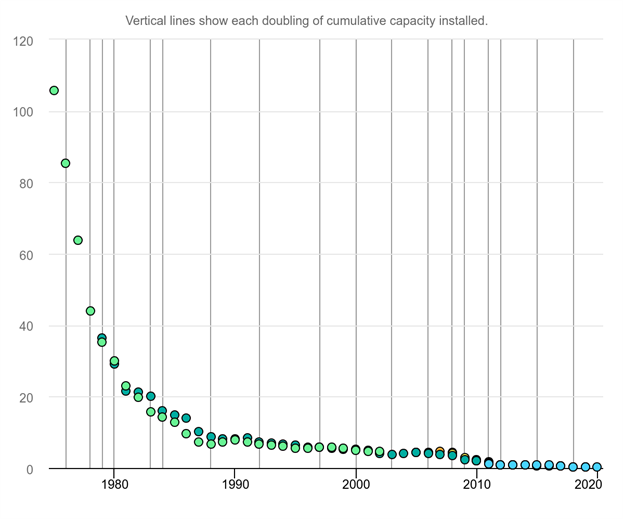An Ounce of Prevention is Worth a Pound of Cure
In this century, there has been a developing conversation about the transition from fossil fuels to clean energy. It is long past time for humanity to dramatically reduce our reliance on fossil fuels… yet we have not done so.
There are many reasons why this is taking much longer than it could or should have:
- the fossil fuel industry and the politicians it pays off have long argued that clean energy and the transition to a “green economy” will be extremely expensive.
- the costs of clean energy were much higher in the early decade of this century and first impressions are lasting.
- there are no humans alive who can remember a time without fossil fuels. We perceive fossil fuels as energy, not as the most damaging form of energy.
Today it is undeniable that the Earth is warming, and our climate crisis is intensifying. 2023 was the hottest year in the last 120,000. Financial damages from climate-triggered storms are rapidly increasing. Our situation now is one when we can see that delaying the transition to renewables is much more expensive than switching away from fossil fuels.
Here is a chart that shows the cost per watt of solar energy from the 1970s to the 2020s. You can see the deep reduction of costs through 1990 and the more gradual lowering of costs since 2000. The first impression of prohibitive costs for solar is what allowed the champions of fossil fuels to state that solar is “too expensive”. Note the vertical lines below. They represent a doubling of total power of installed solar.
https://www.ncei.noaa.gov/access/billions/
This is just solar costs. Solar, wind and hydro energy are all at approximately the same cost as fossil fuels. Clean energy is even lower in cost through time… because the sun and the wind and the water do not send bills ( unlike the constant cost of extraction for fossil fuels).
Clean energy does not have any significant health costs. Fossil fuels do. Some 2,500 people die from air pollution every day. That air pollution is caused by the burning of fossil fuels.
Therefore, the transition to clean energy is the short and long-term future of energy.
Besides the cost of drilling, pumping, transporting and refining; the other massive cost of fossil fuels is the result of burning all that fuel… a warming planet. The increasing costs of global warming are due to an unprecedented increase in the frequency and power of severe weather events, plus Sea Level Rise (SLR).
NOAA estimates that, in the U.S. alone, there have been 376 one billion dollar climate events from 1980 to the present day. NOAA estimates that all these events around the world have cost humanity $2.661 trillion and caused 16,350 human deaths. The numbers keep going up. That $2.6 trillion was over 43 years, yet last year, 2023, included 93 events, $93 billion, and 492 deaths. This is much higher than the average since 1980.
Lloyd’s of London estimated that in the next five years, there could be up to $7.6 trillion dollars of damage, or three times the total damage of the last 43 years.
In other words, the cost of not doing anything will be significantly higher than if trillions of dollars are invested in preventive actions and adaptations. To reduce the costs of damages from extreme weather events and SLR, humanity must:
- Transition to clean energy as fast as possible. It is cheaper in the long run than fossil fuels.
- Spend a few trillion dollars for preventive measures such as sea walls, massive amounts of shade, taller river levees, water capture and new forms of energy.
Doing nothing is the most expensive path to take.


